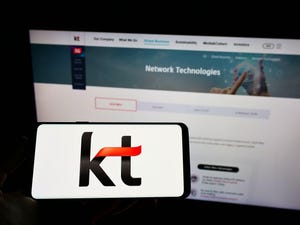Why one top wireless industry analyst is turning off 5G
Mike Thelander, of wireless network research company Signals Research Group (SRG), doesn't want 5G on his phone anymore. His 5G connectivity problems are getting worse 'and I had enough of it.'

Mike Thelander has had enough of 5G.
This week Thelander – who has been an analyst in the US wireless industry for more than 20 years, and who founded wireless network research company Signals Research Group (SRG) – said he will switch off 5G on his phone.
"I've just about given up on 5G, for now," he wrote in a lengthy LinkedIn post outlining why he decided to forgo 5G in favor of 4G. "The problem may be unique to me, but it follows me wherever I go, and it occurs far more often than I'd like."
The post has already received plenty of social media feedback: "This is a quite astonishing & brave post, from someone who absolutely knows what they're talking about. Big respect," wrote Disruptive Wireless analyst Dean Bubley in reply.
In comments to Light Reading, Thelander declined to name his 5G service provider but it's clear that AT&T is the culprit. Importantly, he suggested the issue lies primarily with his provider's implementation of 5G and is not necessarily due to his phone or his location. He said he's seen similar issues across a number of phones, including the Samsung Galaxy S22 and S21, as well as on iPhones. And he's experienced the problems at his home near Minneapolis and while traveling.
Thelander is certainly in a position to know about 5G problems. His firm, SRG, has conducted early, independent research into a wide range of cutting-edge wireless technologies, from T-Mobile's standalone (SA) 5G offering to Dish Network's open RAN-powered 5G network. Qualcomm also cites the company's findings on millimeter wave (mmWave) 5G networks. SRG typically uses professional wireless network testing equipment for its efforts.
5G coming and 5G going
Thelander said he's not sure exactly why he continues to encounter problems on what appears to be AT&T's non standalone (NSA) 5G network. But he theorized that his provider's 5G signals still require an anchor to its 4G LTE network, including for uplink connections, and that the interplay among those links is causing his dropped connections. The NSA version of 5G allowed network operators to deploy the technology quickly but required them to provide an "anchor" 4G LTE connection to customers – the standalone (SA) version of 5G removes the need for that anchor.
"If I then disable 5G on the phone ... the phone [hopefully] reverts to a lowband LTE channel," he wrote on LinkedIn. Lowband connections often travel farther than midband spectrum connections. "I then have a data connection and I can resume synching my email and web browsing (or viewing LinkedIn posts)."
He added: "Besides disabling 5G on the phone, a more attractive solution is for operators to deploy 5G SA with intelligent network decision making to determine when 5G should and shouldn't be used."
Thelander added that the same situation can trouble Wi-Fi connections: As users move farther away from their Wi-Fi access point, their connections become unreliable, but their phones continue to try to connect to Wi-Fi anyway.
Thelander is well aware how his new LinkedIn post might land among 5G executives. But he said that enough is enough. "This has been going on for a year-plus, a couple of years at least," he told Light Reading. "And it seems to be getting worse. And I had enough of it."
He said he's forgoing a speedier but inconsistent 5G connection for a slower 4G one that's more reliable. "I and most consumers don't need much throughput on most applications," he said. "I just need consistent bandwidth."
A long and unstable road
5G technology has rolled out in fits and starts across the US. That's because there are many different flavors and versions of the technology.
Specifically, the first 5G networks in the US ran on mmWave networks. Such connections only reach a few thousand feet and typically only cover high-traffic locations like downtown areas, airports and sports stadiums.
Then, shortly thereafter, operators began expanding their 5G networks onto their lowband spectrum holdings. Signals in such spectrum travel much, much farther than signals in mmWave spectrum – but 5G connections in lowband spectrum aren't much faster than 4G connections in lowband spectrum.
More recently, US operators have been deploying 5G signals on their new midband spectrum holdings. Such spectrum can cover wide geographic areas and can also provide speedy connections. The deployment of midband 5G today remains a work in progress.
Concurrently, US operators are also shifting away from the NSA version of 5G to the SA version. T-Mobile and Dish Network are leading the way in SA, but AT&T and Verizon are working to catch up.
Finally, the deployment of 5G has also been complicated by some operators' dubious business practices. For example, AT&T puts the "5Ge" icon on phones that connect to its 4G network. Its "5G" icon is reserved for its lowband 5G network, and its "5G+" icon is reserved for its mmWave and midband connections.
Separately, Verizon early in its rollout of the technology positioned 5G at the center of a nationwide advertising campaign, despite the fact that its speedy mmWave 5G network at the time covered less than 1% of the US population.
Finally, as Thelander noted in his LinkedIn post, operators' 5G icons don't even necessarily reflect the existence of an actual 5G connection. As Light Reading has previously reported, 5G standards allow 5G icons to be displayed when nearby cell towers contain 5G equipment, even if the user isn't actually connected to a 5G signal.
"I don't want to be overly critical," Thelander said of his decision to switch off 5G on his phone. But he said the problem has caused him to miss important messages. "This is my life ... This is personal."
About the Author(s)
You May Also Like












